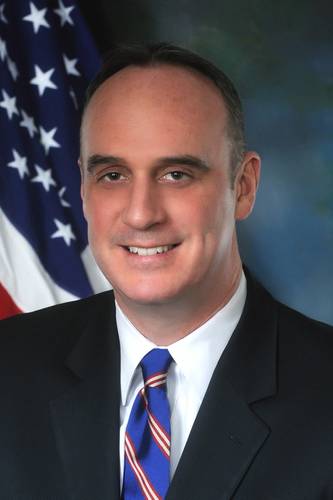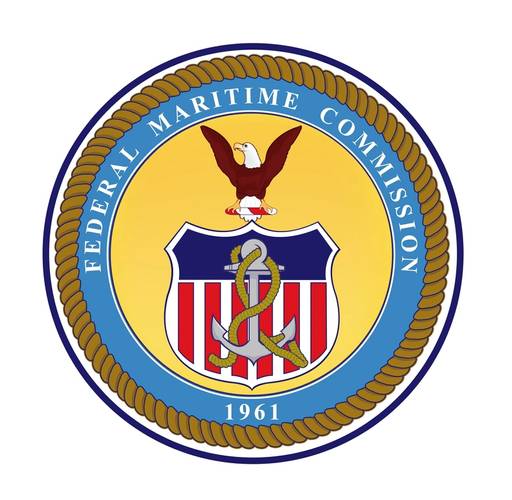FMC Commissioner Doyle Weighs In
Commissioner William P. Doyle's remarks at the Commission Briefing on Mid-Atlantic and Northeast Port Congestion Forum, November 13 2014 in Baltimore, MD.
- Commissioner Doyle's remarks, as follows:
On October 1, 2014, Commissioner Lidinsky and I hosted the Mid-Atlantic and Northeast Port Congestion Forum at the World Trade Center in Baltimore, Maryland. I want to thank all the FMC staff for their participation in setting up and managing the day’s event. David Tubman and Jewel Jennings-Wright worked tirelessly for weeks helping to locate attendees and participants. Thank you both. I also want to thank the Port of Baltimore for providing space and the invaluable assistance in making the forum a reality.
As identified at this forum, the key issues related to port congestion revolve around the following:
- Chassis shortage and dislocation
- Long truck turn times
- The exodus of truck drivers who cannot make a living wage
- Larger vessels discharging cargo
- Vessel bunching
- Rail service delays, including a shortage of railcars nationwide
- One other point of great discontent relates to demurrage fees (shippers who are ready willing and able to pick up their cargo yet through no fault of their own they must pay demurrage fees for days beyond “free time” that the cargo sits in a terminal).
The forum was well attended by many stakeholders. Carriers included COSCO, Maersk, MSC, Evergreen, K Line, Independent Container Line, CMA CGM, ZIM, OOCL, Yang Ming and Columbia Coastal Transport.
For port authorities, we had the Port Authority of New York and New Jersey, the New York Shipping Association, the Philadelphia Regional Port Authority, the Port of Baltimore/Maryland Port Authority, the Port of Virginia, the Georgia Ports Authority, and the Maritime Division of Texas Department of Transportation.
Martine terminal operators included Global Container Terminals, Ports America Chesapeake, SSA Marine and Port Newark Container Terminal.
The International Longshoremen’s Association participated and was well represented.
Motor Carrier/Trucking interests included Best Transportation, RoadOne Intermodal Logistics, Lightning Transportation, Mecca & Son Transportation, Gilco Trucking, Evans Delivery Company, Berry Good Trucking Company, Association of Bi-State Motor Carriers, Maryland Motor Truck Association, Bridge Terminal Transport, and owner operator Hector Alvarez.
Shippers included Walmart, Target, Lowe’s, Johnson & Johnson Sales and Logistics, LLC, and American Coffee Corporation, among others.
Ocean Transportation Intermediaries (OTIs) such as Damco, Mohawk Global Logistics, Expeditors, John S. Connor, Inc., and Premium Logistics North America were in attendance.
Importantly, chassis interests were well represented with Flexi-Van Leasing, Direct ChassisLink, Inc., TRAC Intermodal, North American Chassis Pool Cooperative, and Consolidated Chassis Management, LLC. That is just a short list of participants.
Many participated in panels (summarized below) and submitted comments, which are now available on the FMC webpage.
The port authorities, marine terminal operators and New York Shipping Association all discussed the need manage the larger vessels that arrive in port. Some of the folks in this group pointed to the resulting long truck wait-time at terminals as a major problem that significantly impacts the drayage trucking sector. Overall this panel discussed extending terminal gate hours, the viability of a truck appointment system, improving upon the current chassis management systems, and the potential for more chassis pooling arrangements.
The ocean carriers stated that some of the congestion over the past year was caused by specific events over which they had no control, such as weather. Some of the ocean carriers endorsed the concept of common chassis pools. Others recommended extending gate hours, implementing a truck appointment system where possible, and improving forecasting from shippers. Carriers also cited a container imbalance as one problem—meaning there are more containers coming into the United States than are leaving, and carriers cannot get containers back to the ships quickly and at a reasonable cost.
The ocean carriers recognize the shortage of truck drivers is a major result of congestion. The reasons for this are well known: Drivers spend too much uncompensated time waiting at terminals thus discouraging new blood coming into the sector to replace the aging and retiring trucker population.
The motor carriers and truckers panel all spoke from the same standpoint—the congestion will only get worse, not better, if they keep losing drivers. Panelists provided may examples of the long lines and turn times that truckers endure without any compensation. And if the drivers are not getting paid then they will exit the drayage sector—and in fact are doing so now at an alarming rate. The attendees noted that the idling of trucks caused excessive fuel consumption which also adds to the bottom line losses.
Some trucking attendees and panelists agreed that extended terminal hours may help alleviate congestion, but noted that many drivers would exceed or nearly exceed their hours of service caps during the extended terminal hours.
The trucking industry is at this time not in favor of a truck appointment/management/reservation system. For instance, the Association of Bi-State Motor Carriers, Inc. stated during the public comment session that it vehemently opposes an appointment system unless all levels of service commitments are met at all terminals. It was noted that meeting an appointment might be difficult to manage and comply with if a line forms and that line simply does not move because of some event or lack thereof (basic congestion) inside the terminal.
The truckers did offer proposed solutions including: (1) extending marine terminal operator hours and making them uniform; (2) standardizing turn time measurement and making turn time data from ports public and transparent; (3) devising a technological solution to chassis availability; (4) more gray chassis pools; (5) hiring of more chassis mechanics that are specifically utilized only for chassis maintenance; (6) a uniform terminal tariff to compensate drivers for wait-times; and (7) waiving demurrage fees in certain cases of congestion-related problems such as those associated with vessel bunching.
The chassis operators and pools explained that chassis maintenance is expensive. In some ports there are not specific designated chassis mechanics, meaning mechanics may be pulled away from chassis maintenance to fulfill some other task within the port. Further, the chassis panel stated that the positioning of chassis is a difficult and expensive operation. Often there is a lack of communication between the carriers and the chassis providers on where exactly, and when, chassis will be needed. It was discussed that an off-terminal environment may ensure a dedicated chassis labor force, controllable chassis pool gates, and the ability to control chassis quality.
By way of solutions it was noted that chassis could be better managed by the carriers providing predictive forecasting on their port and terminal calls, interoperability of chassis, and a dedicated the supply of mechanics.
The shippers panel proposed solutions to help alleviate congestion and keep the supply chain open so their shelves could remain stocked. Their ideas included (1) a centralized appointment system, tied to terminal capacity and specific windows, which would allow containers to be used more efficiently; (2) dedicated container stacks; (3) expanded gate hours; (4) a combination of leasing chassis and utilization of a gray pool; (5) early forecasting; (6) expanding RFID use on trucks to measure true turn times, as turn time involves more than just time between the gates; (7) keeping shipper distribution centers open 24/7; and (8) prioritizing containers for truck pick up.
Since the Baltimore forum, the Port Authority of New York and New Jersey has moved forward with several initiatives under their Council on Port Performance (CPP). I can report the following:
Equipment: The CPP Equipment Group has narrowed down the chassis pool operating models to two options. Discussions are also under way concerning the chassis pool manager options. The group is working together in a collaborative manner and expects to conclude these two major decisions by the end of this year and implement them in the first quarter of next year.
Note FMC Action: The Commission cleared an amendment to the Consolidated Chassis Management Pool Agreement (CCM). The amendment authorizes the Agreement to license their chassis pool management software and to provide management services to third party chassis pools. The PANYNJ supported CCM’s amendment as it would provide the Port with additional options to improve chassis operations and reduce congestion. The amendment became effective on November 1, 2014.
Rail: The CPP Rail Implementation Team (RIT) is discussing and prioritizing the four recommendations from the PPTF Report that have been assigned to them. A group of SMEs (Subject Matter Experts) in the area of Block Stowage will be enlisted for the next meeting
Gate Operations: The CPP Gate Operations Team is focusing on the development of a Port Community System; a "one-stop shopping" community website, where information on all the terminals will be available in a single website.
Customer Care: The Customer Care Team is creating a trucker guidebook for the port with the goal of finalizing the book by the first quarter of 2015. Customer Care has also begun work on the Key Performance Indicators.
Labor: The Port is working the Waterfront Commission on labor force matters. There have been 520 longshoremen and checkers hired since February 2014. It is anticipated that another 100 workers remain to be hired.
In Virginia I can report the following from CEO John Reinhart: The Virginia Port Authority along with its Virginia International Terminals, have bought or leased 54 yard hostlers (truck tractors). They have reopened the idled Portsmouth Marine Terminal to ease congestion by way creating more space and staging. Weekend gate hours have been extended. Mr. Reinhart has championed cutting rail yard dwell times by knocking off 3.5 days dwell times by rebuilding out-of-commission straddle carriers. The port has also increased its labor force.
Summary
The port congestion forums hosted by FMC are a unique opportunity for stakeholders to gather in one room, share their views, be listened to, and to respond to the concerns of other affected sectors. I thank the participants at the Mid-Atlantic and Northeast Port Congestion Forum. They showed up – it was standing room only – and spoke openly and frankly. We have a good idea of the causes aggravating congestion in many of our nation’s ports. The participants also came with ideas on solutions. There is no silver bullet, but I am convinced we can significantly reduce the gridlock and congestion with hard work and cooperation among all stakeholders. I look forward to the next steps the Commission takes and the participation of the stakeholders in crafting solutions. Our ports must remain globally competitive to promote economic growth. These first steps will help foster a fair, efficient and more reliable international transportation system.

















